‘Farfetched nonsense,” said the New Yorker. “The film’s first half is too slow and too long,” said Variety. When Alfred Hitchcock’s Vertigo was released in 1958, the critics were by no means all negative – “One of the most fascinating love stories ever filmed,” said The Hollywood Reporter – but, for the most part, the response was lukewarm. “A plot structure of egg-shell thinness,” wrote Penelope Houston in Sight & Sound.
Fifty-four years later, Vertigo took over from Citizen Kane at the top of a Sight & Sound poll of the greatest films of all time and now, 60 years after its original release, the film’s status seems assured. The plot of Vertigo has more holes than a pair of fishnets, which can be off-putting on a first viewing. But, as with many great films, the story is little more than a skeleton on which to drape all the other, more interesting elements that you begin to see once you can look beyond the villain’s insanely convoluted modus operandi, the protagonist’s unfeasible gullibility and all the other “flaws” that make this the most magnificent, preposterous thriller of them all.
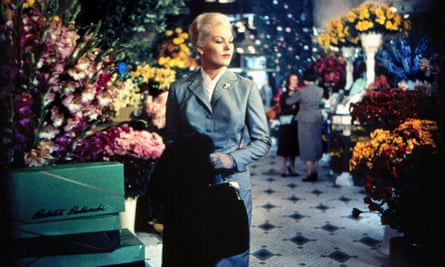
Vertigo was adapted from the 1954 novel D’Entre les Morts (Among the Dead) by French crime-writing duo Boileau-Narcejac, whose credits also included the screenplay for Georges Franju’s classic horror movie Eyes Without a Face (1960), as well as the novel on which Henri-Georges Clouzot based Les Diaboliques (1955), the mother of all dark thrillers with shocking twists, which Hitchcock had, not surprisingly, admired. Set in Paris during the second world war, the book was influenced by another novel, Bruges-la-Morte, Georges Rodenbach’s 1892 masterpiece of Belgian symbolism, in which a grieving widower falls for a dancer who resembles his dead wife and (spoiler!) ends up strangling her with a lock of the dead woman’s hair.
Hitchcock and his screenwriters (Alec Coppel and Samuel A Taylor) transposed the story of D’Entre les Morts to San Francisco and changed the ending, but otherwise preserved its main thrust. James Stewart plays Scottie, an ex-detective with acrophobia (fear of heights), who is hired by an old acquaintance to keep an eye on his wife, Madeleine (Kim Novak), whose odd, morbid behaviour has been giving him cause for concern. Scottie becomes obsessed with the woman he is stalking. After his phobia prevents him from saving her when she leaps to her death, he is inconsolable ... until he meets Judy, who bears a vague resemblance to Madeleine, and tries to recreate his lost love by dressing her in the same clothes.
If, in some quarters, Hitchcock and his films are still considered the last word in misogynistic creepiness, Vertigo is exhibit No 1. “Look how strong and stable the male characters are,” says one critic (I’m paraphrasing, but not by much), while describing the female characters as simultaneously “unhinged, duplicitous and submissive puppets” – which would be quite a feat if it were true.
While Scottie is Vertigo’s protagonist, his point of view is unambiguously delusional. There are only brief flashes from the female characters’ perspectives, but they are as clear-eyed as Scottie’s own vision is blinkered, and are as essential to the story’s poignancy as the women watch helplessly while he rejects the real world and spirals down into necrophilia. Judy loves him, but he is not interested in her – he just wants to remould her into the spitting image of his fantasy woman. She reluctantly capitulates, but was there ever a line as heartbreaking as: “If I do what you tell me, will you love me?”
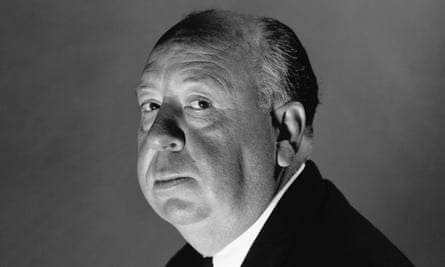
As for dear sweet Midge (Barbara Bel Geddes), Scottie’s friend and ex-fiancee – has there ever been a woman who watched Vertigo without identifying with her, even just a little bit? She’s clever, funny, down-to-earth and selflessly supportive, but what use are these attributes when the man she loves has no sense of humour or self-awareness, and prefers instead to lose himself in an ethereal, flaky fantasy of womanhood?
It is not hard to find claims that Hitchcock’s female characters are blond and bad and deserve to die. “The sexual fantasies of his adult life were lavish and peculiar, and, from the evidence of his films, he enjoyed devising the rape and murder of women,” Peter Ackroyd wrote in Alfred Hitchcock: A Brief Life. “They all get punished in the end,” Bidisha wrote in a Guardian article about Hitchcock’s women. “They were blond. They were icy and remote,” wrote Roger Ebert. “Sooner or later, every Hitchcock woman was humiliated.”
And not for the first time, I wonder if I have been watching the same films as these other writers. Hitchcock himself didn’t help matters by colluding in his own mythology with statements that seemed designed to provoke. “I always believe in following the advice of the playwright Sardou. He said: ‘Torture the women!’ ... The trouble today is that we don’t torment women enough.”
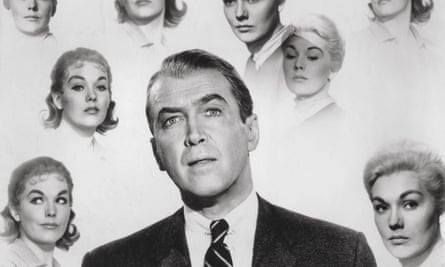
Of course, the film for which Hitchcock is best known – and which has inevitably coloured the popular view of him – is Psycho (1960), in which the blond heroine (Janet Leigh) commits a crime and pays the ultimate price at a disconcertingly early stage in the narrative. And one should not overlook his reprehensible treatment of Tippi Hedren, for whom he developed an unrequited erotic obsession while shooting The Birds (1963) and Marnie (1964), resulting in the sort of abuse that would rightly call down the wrath of today’s #MeToo movement.
But just for a moment, let us consider Hitchcock’s women – all his women, not just the ones played by Novak, Leigh and Hedren. At all stages of his career, he surrounded himself with strong female collaborators such as his wife Alma (whose contributions to his work should never be underestimated), Joan Harrison (secretary, screenwriter and producer), Peggy Robertson (script supervisor and assistant) and Suzanne Gauthier (personal secretary).
And for a so-called misogynist, his films feature a lot of intrepid heroines. Think of sharpshooting Jill Lawrence in The Man Who Knew Too Much (1934), feisty Erica Burgoyne in Young and Innocent (1937), Iris Henderson rejecting attempts to gaslight her in The Lady Vanishes (1938), Mary Yellen tackling a gang of wreckers in Jamaica Inn (1939), Charlie Newton realising there’s more to her beloved Uncle Charlie than meets the eye in Shadow of a Doubt (1943), Dr Constance Petersen treating her patient and solving the mystery in Spellbound (1945), Eve Gill sleuthing in disguise in Stage Fright (1950), Jo McKenna singing Que Sera, Sera as a child-locating device in Hitchcock’s own remake of The Man Who Knew Too Much (1956).
Even when the women are nominally just love interests, they are unusually plucky and quick-witted. Take Pamela in The 39 Steps (1935), Carol Fisher in Foreign Correspondent (1940), Pat Martin in Saboteur (1942) and – above all – Lisa Fremont in Rear Window (1954), who proves she is more than just a vision of pulchritude in a perfect little day dress by breaking into the murderer’s apartment to snoop around. In all the rooms across the courtyard, Rear Window lays out the various stages of sexual relationships for the benefit of its commitment-phobic male voyeur, but marriage in Hitchcock’s films is rarely a happy-ever-after ending, more often the prelude to a woman’s struggle for survival in films such as Rebecca (1940), Suspicion (1941) and Notorious (1946).
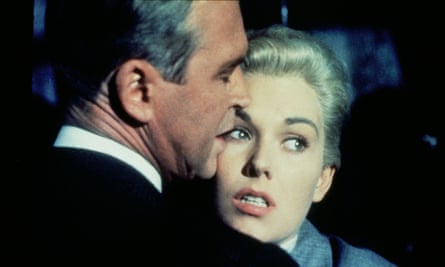
The monstrous mothers of Hitchcock’s films are often cited as another proof of his misogyny. Yet no one ever seems to question Hollywood’s perennial obsession with father issues. And why should mothers be self-effacing and weak? Besides, Mrs Bates in Psycho exists only as a figment of her son’s imagination, and Alexander Sebastian’s mother in Notorious is – from her point of view – entirely correct to be suspicious of his new wife, who is a spy. And offsetting the monstrous mothers or domineering housekeepers (Mrs Danvers in Rebecca, or Milly, hiding shrunken heads in Henrietta Flusky’s bed in Under Capricorn, 1949) there are always benign, dotty but delightfully unconventional – and both played by Jessie Royce Landis – Jessie Stevens in To Catch a Thief (1955) and Clara Thornhill in North by Northwest (1959). “You gentlemen aren’t really trying to kill my son, are you?”
As for Vertigo, it mercilessly scrutinises romantic love while swooning over it. That giant redwood, Bernard Herrmann’s music, that dizzying dolly and zoom. The film doesn’t just reflect Hitchcock’s own attempts to control his leading ladies, but suggests how contemporary notions of romance have themselves been shaped by Hollywood movies. It is not an example of misogyny, but an overblown, beautiful and tragic deconstruction of it.
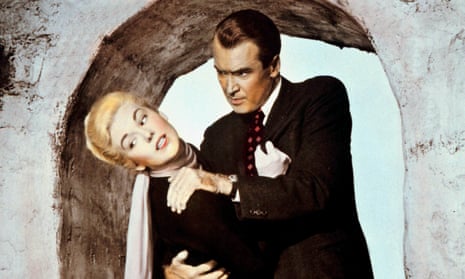
Comments (…)
Sign in or create your Guardian account to join the discussion